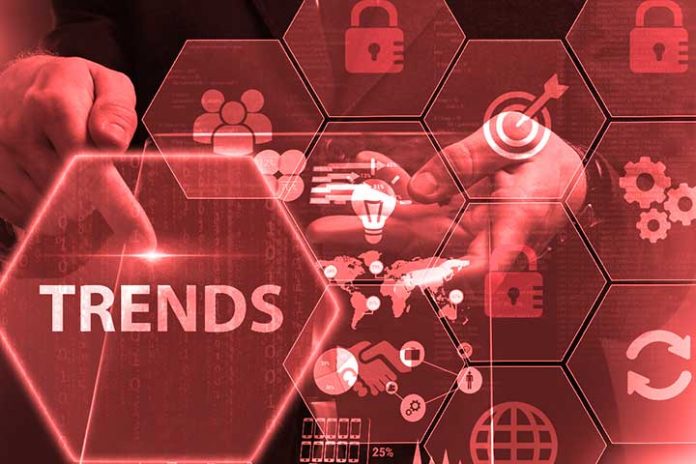Technology trends
In 2022, global e-commerce spending is expected to increase by 60% to around € 13 billion, so companies will have to accelerate their digital transformation to establish effective connections and services with their customers.
This year the main leading trends will be the distribution of the business model, native Cloud platforms, artificial intelligence (AI) and machine learning, the deepening of process automation, new data management paradigms, the evolution of virtual reality, and blockchain technology.
According to data from the consultancy Gartner, companies will embrace a distributed model “digital and remote to improve employee experiences, digitize contact points for consumers and partners and develop product experiences.” In this way, the native Cloud platforms will gain prominence to create new architectures of resistant, elastic, and agile applications, which will allow them to respond to the fresh, fast, and changing digital habits of customers.
The technological trends that will reign during 2022 and how companies will have to apply them to avoid losing opportunities or customers.
Edge Computing, cybersecurity and Hyper-automation
There will be an increased focus on Edge Computing, combining data processing and storage on the collection device located close to the information source, at the perimeter of networks, rather than relying on a single central site that can be hundreds of miles away. This model enables intelligent grids, in which connected devices perform fundamental analysis on the site and use the results to perform specific actions.
As for the data, the trend will be to organize it in fabrics or fabrics ( Data Fabrics ) that, according to Baufest, “provide a flexible and resistant integration, so that they are available in all the places where they are needed.”
Regarding computer security, we will see how the zero trust paradigm will dominate, which requires strict identity verification for everything and for anyone who wants to connect; and also the concept of cybersecurity meshes, that is, of “flexible and composable architectures that integrate disparate and widely distributed security services.”
On the other hand, we will find ourselves before a further step in the automation of processes, which will promote the concept of hyper-automation. This concept involves quickly identifying, examining, and automating as many IT and business processes as possible.
Metaverse, a concept with many possibilities
In addition, in 2022, we will become increasingly familiar with the concept of “metaverse, “that is, persistent digital worlds that exist in parallel with the physical world and within which many of the functions to which we are accustomed in the world can be performed. Real-world, such as learning, working, playing, and socializing.
In this regard, experts predict that the metaverse – a concept that is exempt from aspects of polémicos- has an impact on society as big as the Internet. Also, in this artificial space where the physical world meets the virtual world, virtual reality (VR) technology will allow digital representations of people to interact, play, converse, try on new clothes, etc.
It is estimated that this space will open opportunities for companies, such as sponsorship of events and concerts, development of digital-only products, games, and manufacturing processes. In addition, some experts indicate that the world of work will also increasingly move to the metaverse (from co-working spaces to meetings, simulations, and training).
NFT: Non-fungible Token
In a world in which cryptocurrencies are beginning to gain a new level of diffusion and attention, another development is about to take place that will attract a lot of attention: NFTs (non-fungible tokens), “unique” assets in the digital world that can be bought and sold like any other property. Still, it doesn’t have a definite shape of its own.
This digital asset represents real-world art, music, game items, and videos. They are bought and sold online, often with cryptocurrencies, and are generally encoded with the same underlying software as many cryptos.
Ultimately, NFTs are like physical collectibles but digital, and they also have exclusive property rights. These digital tokens can be considered certificates of virtual or material asset ownership. Some anticipate that anyone will tokenize their work to sell it as NFT. On the other hand, some experts also suggest that NFTs will play a vital role in the next metaverse.


